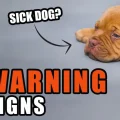Dogs are notorious for their love of bones, but when it comes to rib bones, caution should be exercised. Whether they are cooked or uncooked, rib bones can pose serious health risks to our furry friends. If you see your dog sneaking a rib bone at your next cookout, it is crucial to grab it from him immediately. Furthermore, if you suspect that your dog has swallowed a rib bone, it is important to seek veterinary care without delay.
One of the main reasons why rib bones are dangerous for dogs is their propensity to cause foreign body obstructions. These obstructions can be life-threatening and often require surgery to remove. Cooked or uncooked, the sharp splinters of rib bones can also perforate the intestinal tract, leading to sepsis and potentially death. Therefore, it is crucial to be vigilant and ensure that dogs never have access to rib bones.
If a rib bone becomes lodged in the esophagus, it can cause various symptoms such as shallow breathing, pain, gulping, or even vomiting. These signs are likely to occur within the first ten minutes of ingestion. However, if the bone successfully makes its way to the stomach, the signs may take an hour or more to appear. It is important to note that any delay in seeking veterinary care can significantly worsen the situation.
It is essential to understand that dogs, unlike some wild dogs such as hyenas, are unable to digest bones properly. The acidity of their stomach is not sufficient to break down bones, making them a potential hazard. Therefore, cooked bones of any kind should NEVER be fed to dogs. It is crucial to prioritize their safety and well-being by avoiding giving them any bones, especially rib bones.
If your dog has ingested rib bones and is experiencing symptoms such as vomiting, it is vital to act quickly. Immediate veterinary care is necessary to assess the situation and provide appropriate treatment. Remember, prevention is key when it comes to the health and safety of our furry companions. Ensuring that dogs do not have access to rib bones, cooked or uncooked, can help avoid potentially life-threatening situations.
Can A Dog Survive Eating A Rib Bone?
A dog cannot safely survive eating a rib bone. Rib bones, regardless of their source or whether they have been cooked or not, pose a serious risk to dogs. If a dog sneaks a rib bone at a cookout, it is crucial to immediately remove it from their possession. In the event that a dog has swallowed a rib bone, it is imperative to seek veterinary attention without delay.

Can Dogs Get Sick From Eating Rib Bones?
Dogs can indeed get sick from eating rib bones. Whether cooked or uncooked, rib bones pose a risk to dogs as they can cause foreign body obstructions. In such cases, surgery may be required to remove the obstructed bone. Additionally, the bones can splinter and create sharp slivers that can perforate the intestinal tract. This can lead to a serious condition called sepsis, which is an infection that can ultimately result in death.
To summarize the risks associated with dogs eating rib bones:
1. Foreign body obstructions: Rib bones can cause blockages in a dog’s digestive system, potentially leading to the need for surgical intervention.
2. Intestinal perforation: The splintered fragments of rib bones can puncture the intestinal tract, causing severe damage and potential infection.
Considering these risks, it is strongly recommended to avoid giving rib bones to dogs. Instead, provide them with safe and appropriate chew toys or treats that are specifically designed for canine consumption.
How Long Does It Take For A Dog To Get Sick After Eating A Bone?
When a dog consumes a bone, the time it takes for them to show signs of illness can vary. If the bone becomes lodged in the esophagus, symptoms such as shallow breathing, pain, gulping, or vomiting are likely to occur within the first ten minutes. However, if the bone successfully makes its way to the stomach, it may take an hour or more for any signs of sickness to appear.
Here is a breakdown of the timeline:
1. If the bone gets stuck in the esophagus, the following signs may be observed within the first ten minutes:
– Shallow breathing: The dog may exhibit difficulty in breathing properly.
– Pain: The dog may show signs of discomfort or pain, such as whining or restlessness.
– Gulping: The dog may repeatedly swallow or gulp, as if trying to dislodge the bone.
– Vomiting: In some cases, the dog may vomit in an attempt to remove the bone.
2. If the bone successfully passes through the esophagus and reaches the stomach:
– It may take around an hour or more for symptoms to manifest.
– The dog may exhibit signs such as discomfort, restlessness, or abdominal pain.
– Vomiting or regurgitation may occur as the body tries to expel the bone.
It is important to note that consuming bones can be dangerous for dogs, as they can cause choking, blockages, or damage to the digestive tract. If you suspect your dog has ingested a bone and is showing any of the aforementioned symptoms, it is crucial to seek immediate veterinary attention.
Please remember that this is general information and the timeline can vary depending on various factors such as the size and type of bone, individual dog’s health, and the specific circumstances.
Can Dog Stomach Acid Dissolve Cooked Bone?
Dog stomach acid cannot dissolve cooked bone. The digestive system of domestic dogs is not equipped to break down and digest bones like wild dogs such as hyenas can. The acidity level of a dog’s stomach is not sufficient to facilitate the dissolution of bone. Therefore, it is crucial to never feed cooked bones to dogs as they can pose serious health risks. Here are some key points to consider:
– Cooked bones should NEVER be fed to dogs. The cooking process alters the structure of the bone, making it more brittle and prone to splintering.
– When dogs consume cooked bones, they can easily splinter and cause choking hazards or blockages in the digestive tract.
– The stomach acid of dogs is not strong enough to dissolve bones, especially when they are cooked. This means that the bones can remain in the digestive system for extended periods, leading to potential complications.
– The sharp fragments of cooked bones can cause tears or perforations in the esophagus, stomach, or intestines, which can be life-threatening.
– It is essential to provide dogs with safe and appropriate chew toys or treats specifically designed for them to prevent any potential harm from consuming bones.
Cooked bones should never be given to dogs as their stomach acid cannot dissolve them. It is crucial to prioritize the safety and well-being of our furry friends by providing them with suitable alternatives for chewing and avoiding any potential risks associated with cooked bones.
Conclusion
It is crucial to prioritize the safety and well-being of our beloved canine companions when it comes to feeding them. Specifically, when it comes to bones, it is important to exercise extreme caution. Whether cooked or uncooked, rib bones pose a significant risk to dogs, potentially causing foreign body obstructions that may necessitate surgical intervention. Moreover, the sharp slivers of bones can perforate the intestinal tract, leading to life-threatening sepsis. Symptoms such as shallow breathing, pain, gulping, and vomiting may manifest if a bone becomes lodged in the esophagus, while signs of distress may take longer to appear if the bone reaches the stomach. As responsible pet owners, we must adhere to the golden rule that no cooked bones should ever be fed to dogs. Unlike hyenas and some other wild dogs, domestic dogs lack the necessary stomach acidity to effectively digest bones. By prioritizing their safety and avoiding the consumption of rib bones, we can ensure a long and healthy life for our furry friends.












